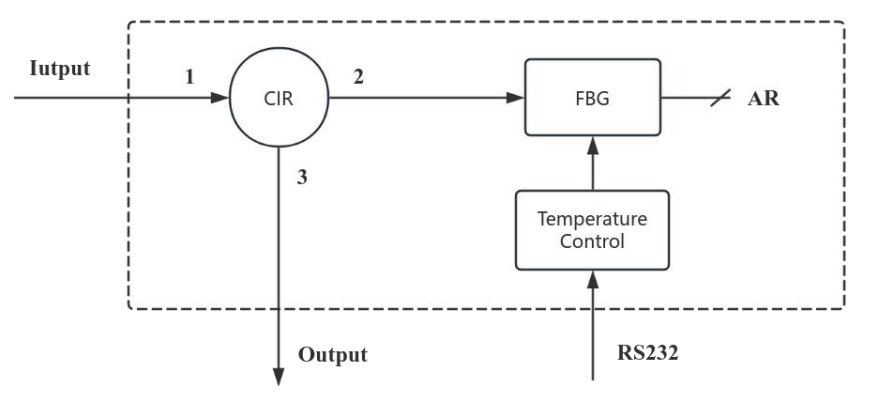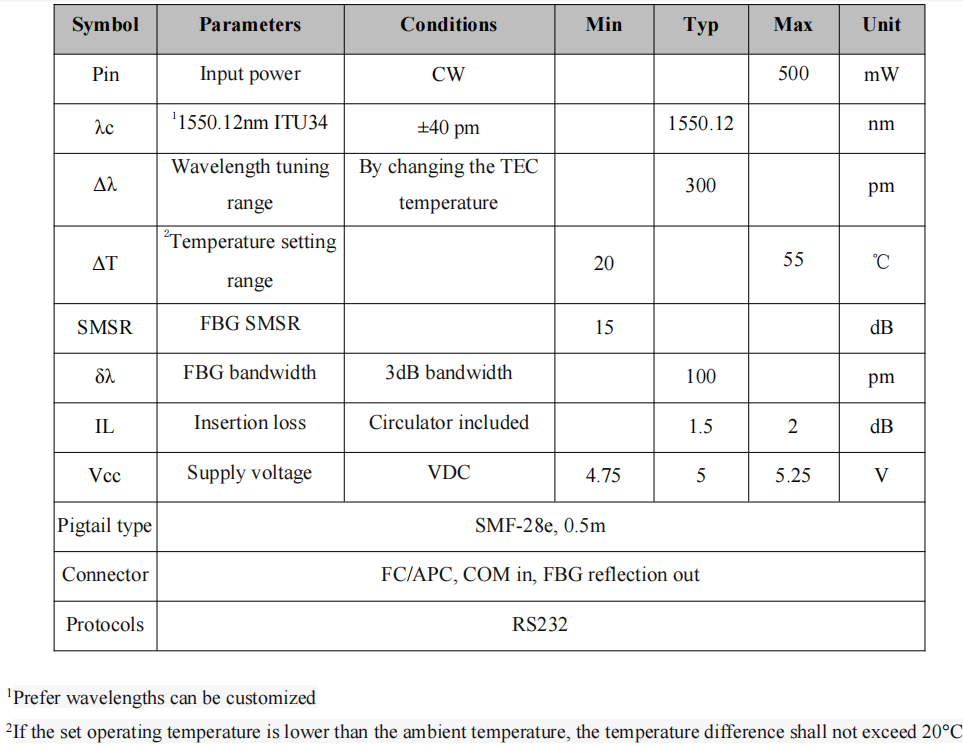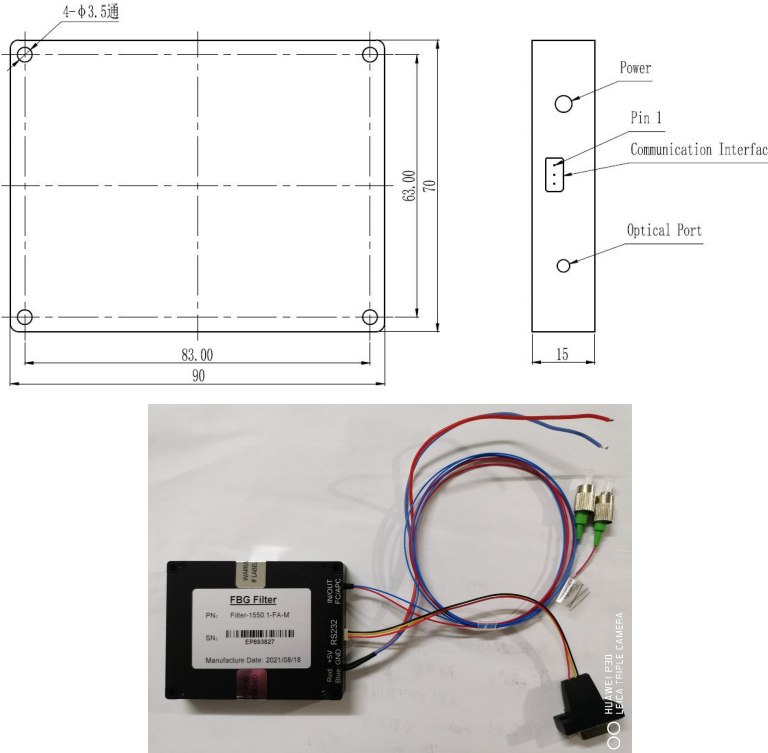1.Description
1.1.General Introduction
The Fiber Bragg Grating (FBG) filter employs a narrowband FBG structure in combination with a precision temperature control system to achieve wavelength-selective filtering. It is primarily used for suppressing amplified spontaneous emission (ASE) noise, stabilizing laser output wavelengths, and enabling spectral shaping. This type of optical filtering is widely applied in distributed fiber optic sensing systems, fiber-optic hydrophones, lidar systems, and various scientific research applications where high spectral selectivity and environmental stability are required.
1.2.Key features
lIntegrated Fiber Optic Circulator
Facilitates efficient unidirectional routing of optical signals within the module, enabling compact and versatile system integration.
lHigh-Precision TEC Temperature Control
Utilizes a thermoelectric cooler (TEC) to stabilize and finely tune the center wavelength of the Fiber Bragg Grating (FBG), ensuring spectral accuracy and thermal stability.
lStandard Wavelength Configuration
Factory default wavelength is 1550.12 nm (ITU-T C34). Custom configurations across the C-band and other wavelength are available upon request to accommodate various system requirements.
lEnvironmental Adaptability
Standard operating temperature range: 0°C to +55°C. Extended temperature version supporting -35°C to +65°C is available for harsh or outdoor environments.
2.Schematics

The module integrates a temperature-controlled Fiber Bragg Grating (FBG) assembly and a precision thermal regulation system, along with a built-in fiber optic circulator. Optical filtering is achieved through the reflection spectrum of the FBG, allowing for stable and narrowband wavelength selection with high spectral accuracy.
3.Characteristics

4.OperationandStorage Conditions

5.Model
FX-FBGFLT-ITU34(Wavelength)
6.Design


